This post may contain affiliate links. Please read our disclosure policy.
This easy buttermilk substitute works perfectly when making pancakes, biscuits, cakes or cupcakes. Learn how to make buttermilk at home and save yourself a trip to the grocery store!
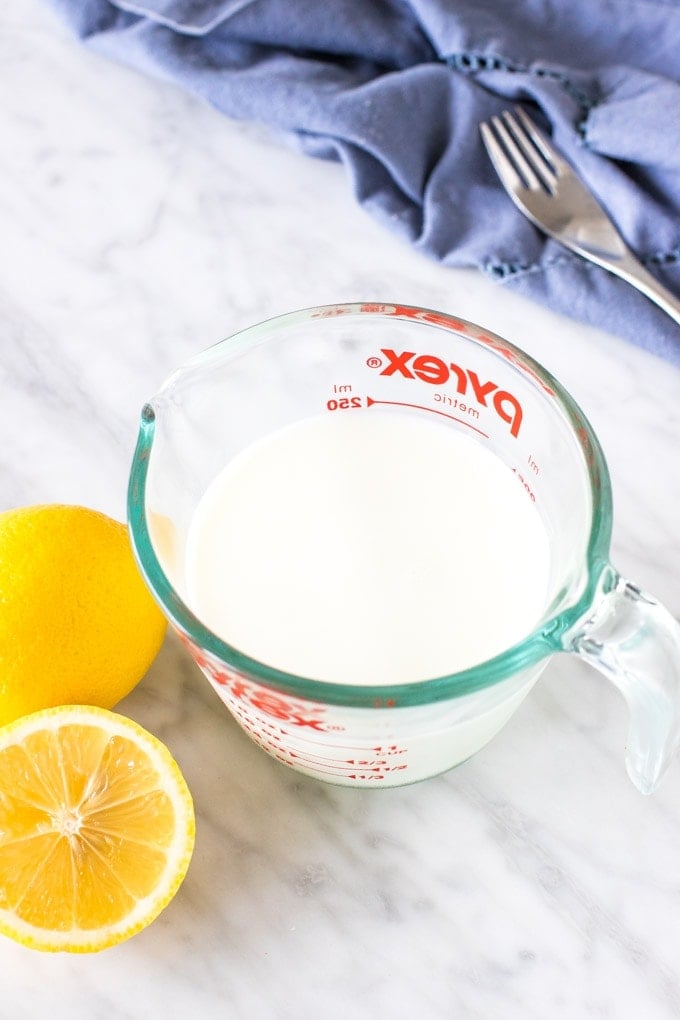
Have you ever had a serious craving for some delicious Homemade Waffles, only to realize that it calls for buttermilk and there’s none in your fridge? Even though I bake and cook a lot – I don’t typically keep buttermilk on hand. It always goes bad way sooner than I’m able to use it up, and I hate throwing away food. So today, we’re talking all about buttermilk and how to make it at home for an easy substitution in all of your baking and cooking.
What is Buttermilk?
Buttermilk is soured milk. It’s thick, creamy and tangy but surprisingly low in fat. Traditionally, it was the milk leftover after churning butter. Today, the product you buy in the store is cultured milk. Buttermilk can make so many recipes way more delicious. It makes pancakes, biscuits, and other baked goods fluffy and moist. It can also be used in fried chicken to make the coating extra flavorful.
Why is It Important?
Buttermilk is a key ingredient in so many baked goods. Whether you’re making fluffy Buttermilk Pancakes or a Moist Red Velvet Cake, buttermilk adds a creamy, tangy flavor. It also gives baked goods a moist and tender crumb. The acid reacts with baking soda, helping cakes, cupcakes, and pancakes to rise and become super fluffy.
Can I just use Regular Milk?
Maybe. Honestly, it depends on the recipe. But typically speaking – I do not recommend substituting milk for regular buttermilk unless it’s specifically stated in the recipe. Buttermilk is a lot creamier and tangier than plain milk, so it adds a lot more flavor. Also, a lot of recipes rely on the acid to help the baked goods rise. So you could end up with flat or sunken cupcakes or cake.
How to Make Buttermilk At Home
Don’t worry though – you can easily make your own using a simple substitution. Basically, we need to add acid to milk to make it sour (remember that buttermilk is acidic?). So you’ll need either freshly squeezed lemon juice or distilled (white) vinegar as your acid.
- Add 1 tablespoon of freshly squeezed lemon juice (or vinegar) to a liquid measuring cup.
- Pour in the milk until you reach the 1 cup line.
- Stir the mixture, and let the milk sit on the counter for 10 minutes before using.
You’ll see the milk start to thicken as it sits. For this recipe, I typically use 1% or 2% milk because that’s what I have on hand, but really any kind of milk works well – anywhere from skim milk to whole milk. I don’t recommend using lemon juice from the bottle, however, because I find it has an overly bitter, sour flavor that you don’t want.
*Note that if your recipe only calls for ½ cup of buttermilk, add 1 ½ teaspoons lemon juice/vinegar and then pour your milk to the ½ line of the measuring cup.
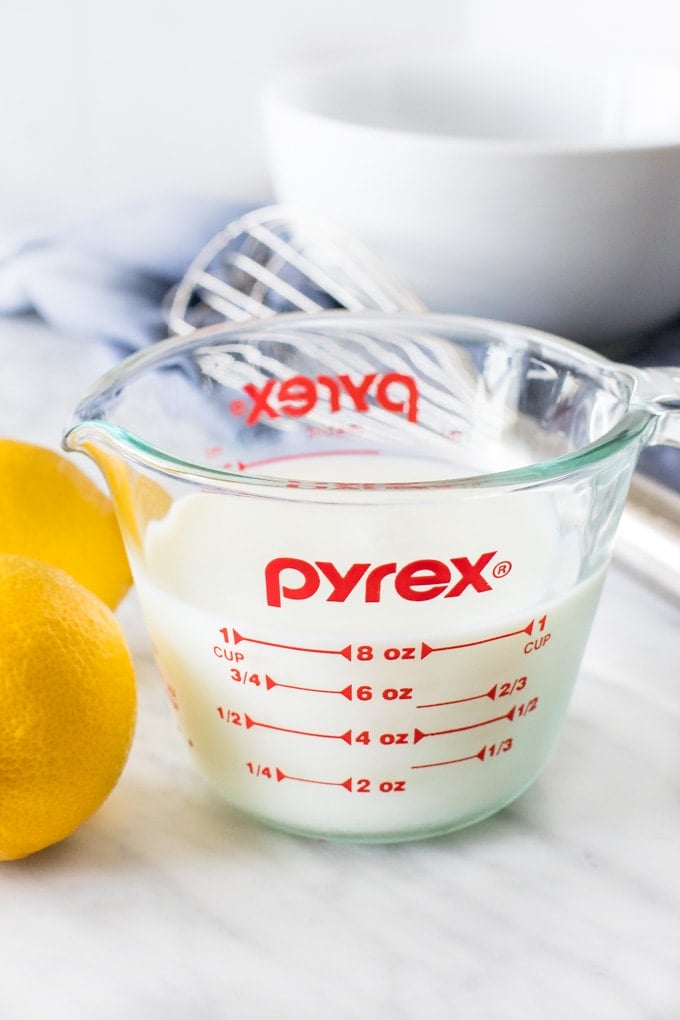
Recipes with Buttermilk
Now that you don’t have to run to the store for buttermilk, how about making some Irish Soda Bread or Cranberry Orange Scones? If it’s something sweet you’re craving, try a Lemon Pound Cake or some Cranberry Muffins!
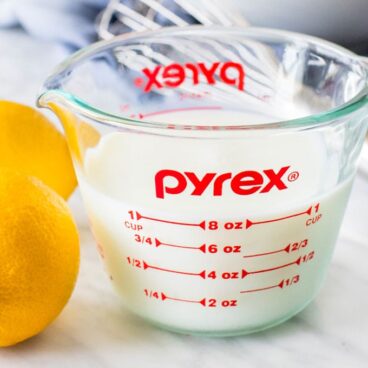
How to Make Buttermilk
Ingredients
- 1 tablespoon freshly squeezed lemon juice or vinegar
- 1 cup milk skim, 1%, 2% or whole milk
Instructions
- Add the lemon juice to a liquid measuring cup.
- Pour the milk to the 1 cup line.
- Stir the mixture, then let sit at room temperature for 10 minutes before using it.
Notes
Nutrition
Nutritional Disclaimer Kristin Maxwell of "Yellow Bliss Road" is not a dietician or nutritionist, and any nutritional information shared is an estimate. For accurate calorie counts and other nutritional values, we recommend running the ingredients through your preferred online nutritional calculator. Calories and other nutritional values can vary depending on which brands were used.
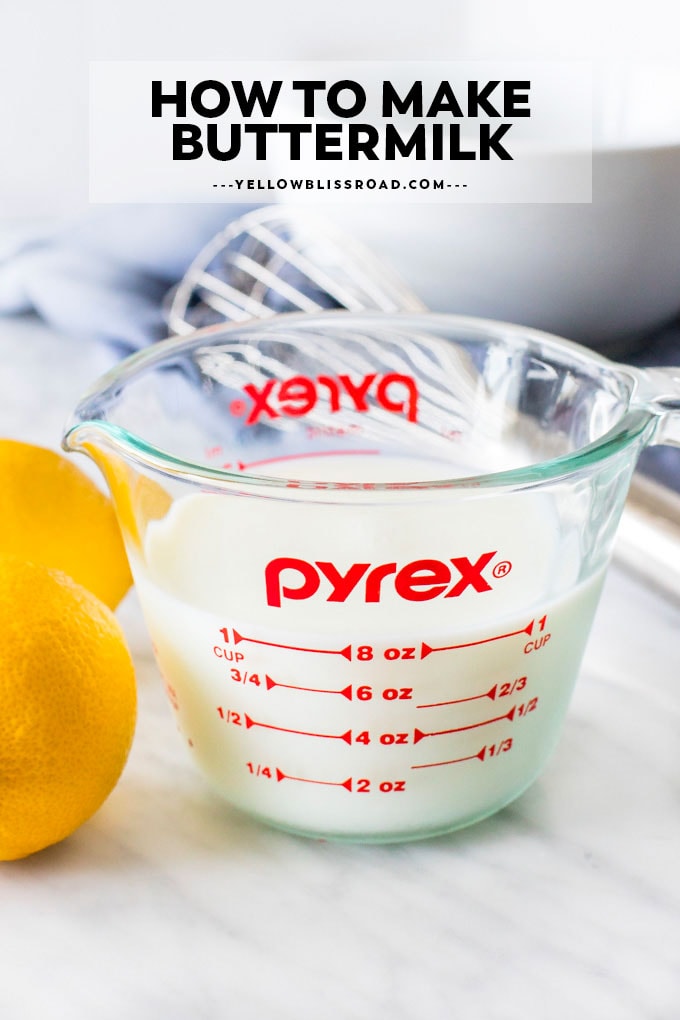
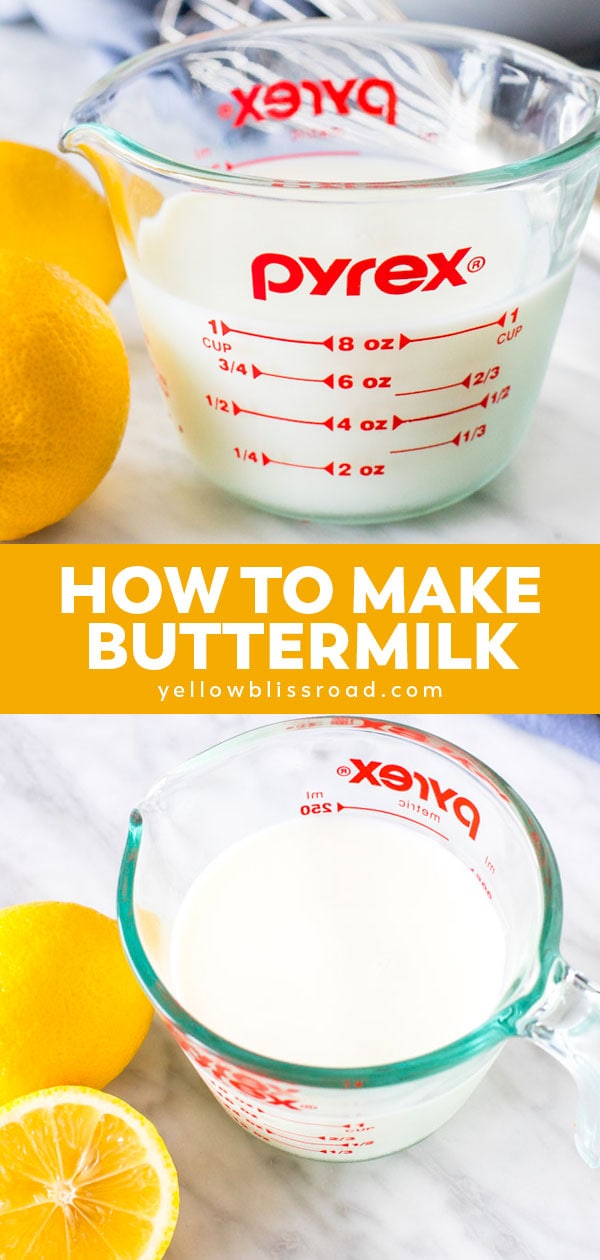
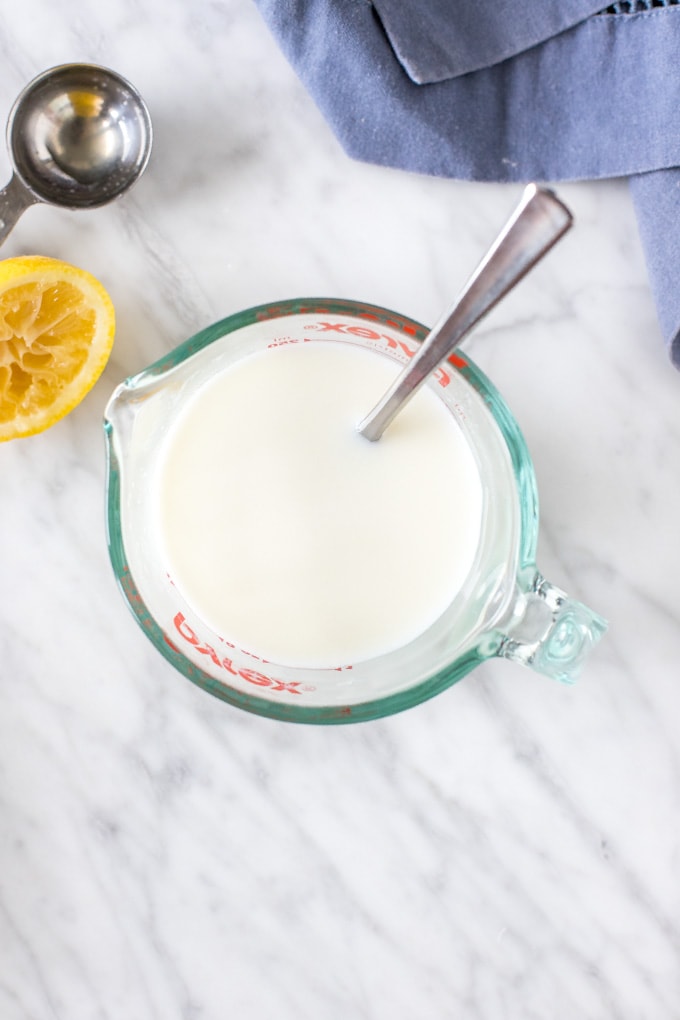
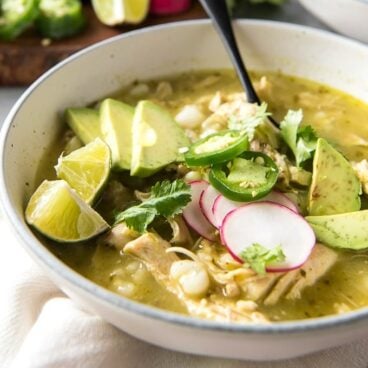
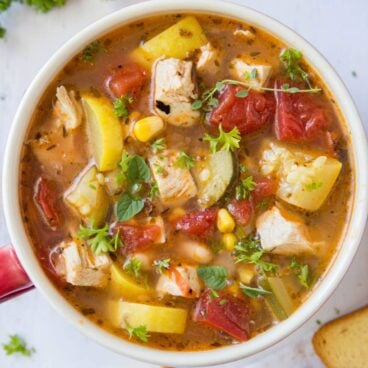
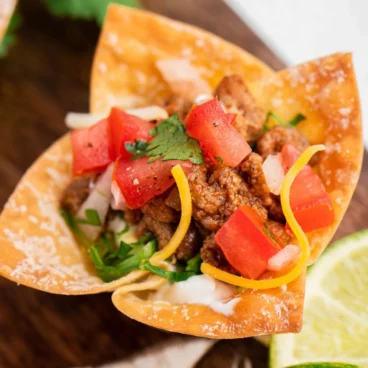
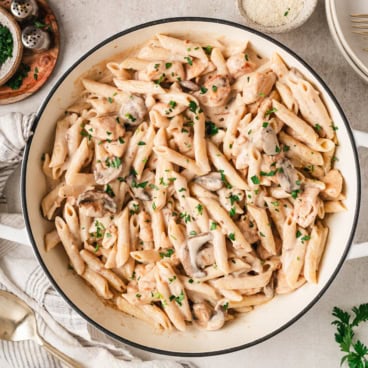
I don’t have lemons can I use limes?
Limes have a different flavor that I wouldn’t recommend. White vinegar would work though if you have that.